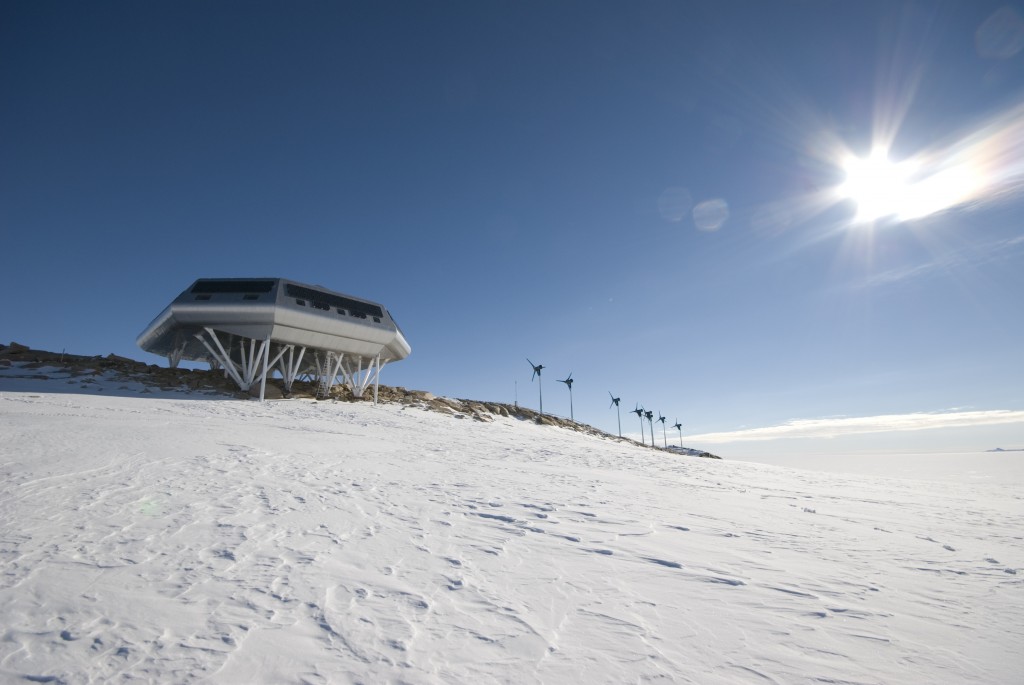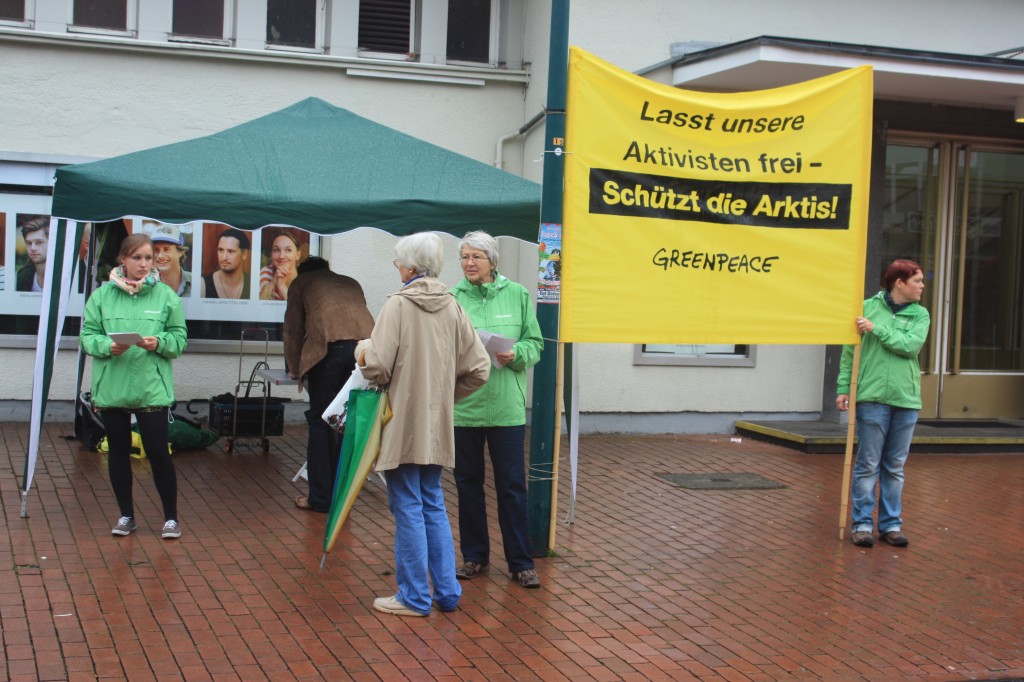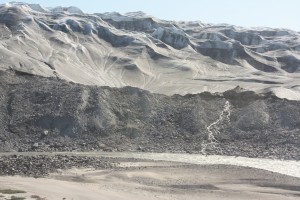Search Results for Tag: Sea level
Greenpeace Arctic Protest in Germany
Greenpeace campaigners were on the streets around the world on Saturday October 5th, protesting against the arrest of the Arctic Sunrise crew by the Russian coastguard. For a short summary of the background, see “Greenpeace holds rallies...” on our DW environment page.
I paid a visit to the stand set up in our local shopping centre, Bad Godesberg, to see what was happening. Greenpeace Bonn were working hard to persuade shoppers on a drizzly October morning to sign the online protest against the arrests. It was interesting to see a mix of younger and more experienced campaigners outside the town theatre. There was also quite a wide age range amongst the passers-by who stopped to find out what was happening or even sign the online petition to have the Arctic Sunrise crew freed.
The controversy has certainly brought a lot of attention to the Arctic. I have the feeling there is a growing awareness here of the whole issue surrounding climate change, melting Arctic ice, and the difficulties involved in the economic development of such an ecologically sensitive area. Still, most people do not realise how relevant the “distant” Arctic is to all of us, given the role it plays in influencing climate change as a whole, our weather patterns and, of course, with the huge Greenland ice sheet, global sea levels.
More snow less ice in the Antarctic

Princess Elisabeth Antarctica, Belgium’s research station
Copyright Ren̩ Robert РInternational Polar Foundation
Regular ice blog followers may remember a recent post including an Interview with Andrew Shepherd from Leeds University, UK, about ice melt in the Antarctic. One of the factors he explained was that increasing precipitation as a result of warming was falling on the East Antarctic ice sheet as snow and so increasing its mass. Although that particular study showed that the Antarctic has indeed been losing ice over the past 20 years, (contrary to popular opinion), increasing snow was balancing this loss to some extent. Now a study published in Nature shows that a lot of the ice increase from this snow is being lost again, because the extra snow puts pressure on the ice, making it flow faster towards the coast.
![]() read more
read more
Greenland ice to melt completely with just 1.6° warming?
A new study by the Potsdam Institute for Climate Impact Research and the Universidad Complutense de Madrid indicates that Greenland’s ice sheet could be much more vulnerable to climate change than previously thought. It estimates the trigger for a complete melting of the ice sheet at somewhere between 0.8 and 3.2°C of global warming, with the most likely figure at 1.6°C. above temperatures before industrialisation. A O.8°C rise has already been registered. In the long term, a huge melting of land ice could result in major rises in sea level, which would threaten coastal and low-lying areas and the lives of millions of people. More on the DW environment website.
Climate change in Arctic more extensive than expected

Greenland iceberg
A comprehensive new report on the the extent of climate change in the Arctic indicates that change is happening even faster than scientists were expecting. There is more on the Science Daily website.
WWF Arctic says the report shows Arctic states have to take urgent measures to protect the Arctic environment – and should take on a leading role in tackling the roots of the problem by radically reducing the production of greenhouse gases.
One thing that makes it clear just how important the Arctic is for the world as a whole is that the report says global sea level could rise through ice, snow and permafrost melting on land by up to 1.6 metres by 2100.
On the trail of the truth about Greenland

Running for campus…
Let me recommend you a website and the book it’s based on.I’ve seen it here and it’s very impressive:Arctic Tipping Points
is the title, and it contains some beautiful and in some cases moving images relating to climate change and the Arctic. The editors are Carlos Duarte (quoted in earlier post) and Paul Wassmann (University of Tromsö.

(No tipping point for these swings)
I have been following the presentations dealing with the Greenland ice sheet closely. Sometimes it is a little frustrating when speakers hint at important results of studies which they cannot reveal fully ahead of publication. If you guys are trying to increase the suspense and arouse my interest in reports coming out in the next few months – you have succeeded. On the other hand, it seems a pity, with quite a few journalists sitting in the conference, that we can’t use the opportunity to pass on some interesting results. Unfortunate timing, it seems some of the reports were originally planned to have been ready. But let me sum up what I can here.
Peter Wadhams, Professor of Ocean Physics at the University of Cambridge introduced the strain of the conference dedicated to “ice-ocean-atmosphere interactions in the Arctic”. He refered to very large changes on the Greenland ice sheet, with very large areas of melt occurring in summer and a substantial net flux of fresh water into the sea every year. Now that is one of the key factors in measuring the changes. He told us the amount was almost the same as the total melt from mountain glaciers, suggesting this could be making a comparable contribution to global sea level rise as melt from all the rest of the glaciers in the world put together. He stressed the rate of melt on Greenland is accelerating and scientists just don’t know how the acceleration rate will continue.
Lars Otto Reiersen is the Executive Secretary for AMAP, the Arctic Monitoring and Assessment Programme. He reported on the SWiPA (Project) (Snow, Water, Ice and Permafrost in the Arctic), which is preparing a report to be presented to a meeting of Arctic ministers in May. (sigh!) Suffice it to say, he indicated that when it comes to the mass balance of the Greenland ice sheet, the updated figures will show even higher melt. All will be revealed in a few months, it seems. And it will not be cheery reading.

Late afternoon impression of Tromsö campus while the weather was still beautiful (some like it cold). It is thawing at the moment, but forecast to cool again soon.
























Feedback